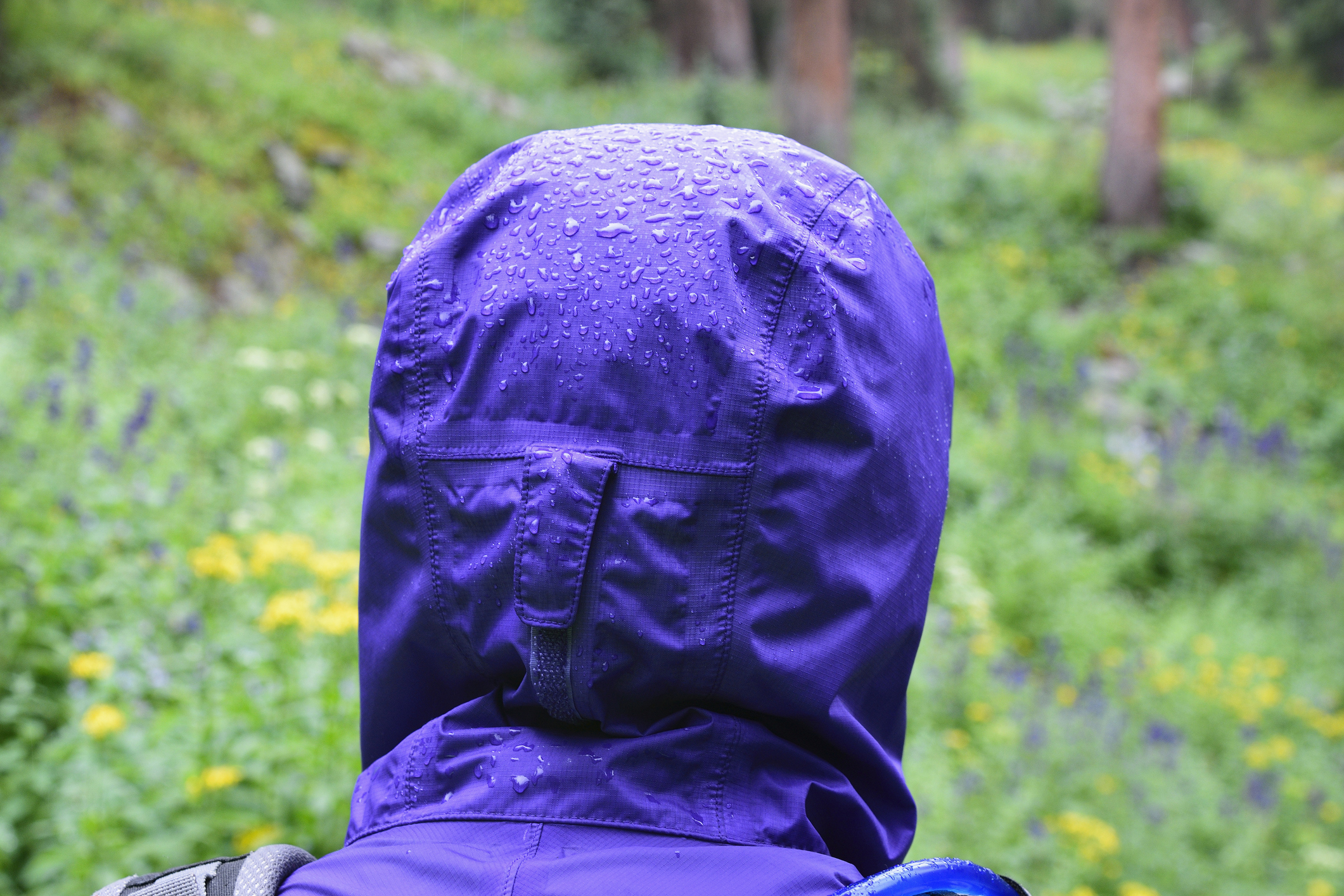How to stay dry outdoors: Understanding the hydrostatic head (HH) rating of your jacket and tent
Wet weather walking can be fun, but not if you get soaked to the skin – understanding how waterproofing works can change your experience


Spring has sprung, the clocks have changed and we’re all looking forward to getting out and exploring some new trails, but this time of year is also notoriously wet and nothing ruins a good day’s walk more than getting drenched through right at the outset. At the same time, a less-than-perfect weather forecast, or a few spots of rain on your window should absolutely not be enough for you to change plans or cancel a hike.
A bit of cloud juice can really activate nature and excite the senses, whether you’re walking in woodlands or hiking in the hills, where gushing streams and cascading waterfalls are at their best when there’s been some rain. And there’s nothing like that feeling of finishing a wet-weather walk with a steaming cup of tea or coffee, or a pint in front of a pub fire with friends, when you can celebrate having braved the elements.
But all of these experiences are definitely a whole lot more enjoyable, and much more comfortable, if you manage to keep the moisture on the outside of your layering system. And to achieve that, you need the right gear.
The best waterproof jackets are, naturally, the most important tools in your kit cupboard when it comes to staying dry on the trails, but ‘waterproof’ is a less precise term than many people realise – there are various degrees of waterproof performance, and a dizzying range of fabrics and technologies that claim to deliver it. Here we take a look under the stormproof hood to see what that means.

Waterproof means waterproof, right?
Not exactly, no. Some materials are, of course, extremely waterproof, but even those used in the production of things like the best tent groundsheets and tough hiking backpacks have their limits, and for a fabric to be used in a functional, wearable garment like an outdoor coat, it needs to be porous to some degree, because this allows your body to ‘breath’.
If you were to wear a jacket with zero breathability while out walking, moisture created by your body would simply build up inside, and you’d still end up getting wet and clammy. Which is never nice. So, the best waterproof jackets are scientifically assessed and assigned a hydrostatic head rating.

Right, so what is a hydrostatic head?
A hydrostatic head, or HH, is a unit of measurement given to fabrics after laboratory testing to indicate how waterproof there are. It is given millimetres (mm) and is calculated by a test that involves using an open-ended test tube placed over the outer material of the garment being assessed. The tube is then gradually filled with water. When the water starts to penetrate the fabric, the height of the water is measured and that is the hydrostatic head rating of the garment.
Get all the latest news, reviews, deals and buying guides on gorgeous tech, home and active products from the T3 experts
So, if water starts to seep through when the water is at 1 metre (1,000mm), the hydrostatic head of that garment is given as HH 1,000mm. As the performance levels of fabrics have improved over time – reaching an incredible 30,000mm – machines have been developed to simulate this testing process because it was impractical to try and position a 30-metre+ tube of water over a bit of material in the lab.

What makes a jacket waterproof?
Factors that play into making a jacket more or less waterproof include the density of the Denier weave, and whether any waterproof coatings (such as DWR) have been applied. The performance level of waterproof coatings will visibly deteriorate over time – especially if the garment is machine-washed – with moisture seeping into the fabric rather than beading on the surface.
Layers are another important consideration. Waterproof jackets are either 2-layered, 2.5 layered or, at the top end, 3-layered. And, besides the HH rating, you also need to check that any waterproof jacket you are considering purchasing has taped seams.
Zips are another area of potential weakness, and make sure that hood, hems and cuffs can be tightened to keep water from getting in. Don’t assume that pockets are waterproof, just because the jacket is – stash electrical devices in interior pockets if in doubt.

How high does a hydrostatic head need to be for a jacket to be considered waterproof?
The annoying answer to this question is that it depends on your interpretation, because there is no universal agreement on what constitutes ‘waterproof’. In Britain, jackets can be described as ‘waterproof’ if they have a HH of 1,500mm (in fact the Ministry of Defence considers a garment waterproof if it has a HH of just 800mm), but this is relatively low. In Switzerland, the Swiss Federal Laboratories for Materials Science and Technology (EMPA) insist garments must have a HH of 4,000mm to be described as waterproof.
As previously mentioned, HH ratings on modern high-end jackets have now risen to as much as 30,000mm, but it’s worth remembering that once you get above a certain level of waterproofing, the breathability of the jacket will be impacted. A very high HH rating in garments like the Mammut Taiss HS waterproof jacket, intended for use in extreme conditions when you might be moving slowly (such as mountaineering or climbing) is generally considered good, but for more aerobic activities (such as hill walking) it’s better to have more breathability.
A quick guide to the ideal HH ratings for jackets
- >1,500mm – water resistant, rather than waterproof
- 1,500–2,000mm – adequate for short, drizzly day dawdles, school runs and walking the dog
- 5,000–10,000mm – capable of keeping you dry during most low-level footpath forays and easy hill-walking escapades
- 10,000–20,000mm – Serious protection for big outings in almost all conditions, including winter walking in exposed terrain
- 20,000–30,000mm – Super waterproofing for adventures in extreme landscapes, including mountains. Breathability will not be the best, however.

Is the hydrostatic head rating of the jacket all I have to worry about?
In a word, no. The HH rating is just one (albeit very good) indicator of how well a jacket is going to perform in wet and wild conditions. (In fact, Gore-Tex, who produce some of the most waterproof and breathable fabrics in existence, having pioneered the concept in the first place, refuse to subscribe to HH ratings, but their materials are tried and tested to other criteria.)
Hardshell jackets need to be hardwearing as well as technically advanced and waterproof, because they are often worn with backpacks that have harnesses and waistbelts that can be abrasive.
A reliably waterproof jacket will also keep the wind out, which cuts down on the chill factor, but don’t rely on your outer shell to stay warm – you will need the best base layer you can get, plus a midlayer such as a fleece or a puffer jacket to supply proper thermal protection.

Author of Caving, Canyoning, Coasteering…, a recently released book about all kinds of outdoor adventures around Britain, Pat Kinsella has been writing about outdoor pursuits and adventure sports for two decades. In pursuit of stories he’s canoed Canada’s Yukon River, climbed Mont Blanc and Kilimanjaro, skied and mountain biked across the Norwegian Alps, run ultras across the roof of Mauritius and through the hills of the Himalayas, and set short-lived speed records for trail-running Australia’s highest peaks and New Zealand’s nine Great Walks. A former editor of several Australian magazines he’s a longtime contributor to publications including Sidetracked, Outdoor, National Geographic Traveller, Trail Running, The Great Outdoors, Outdoor Fitness and Adventure Travel, and a regular writer for Lonely Planet (for whom he compiled, edited and co-wrote the Atlas of Adventure, a guide to outdoor pursuits around the globe). He’s authored guides to exploring the coastline and countryside of Devon and Dorset, and recently wrote a book about pub walks. Follow Pat's adventures on Strava and instagram.